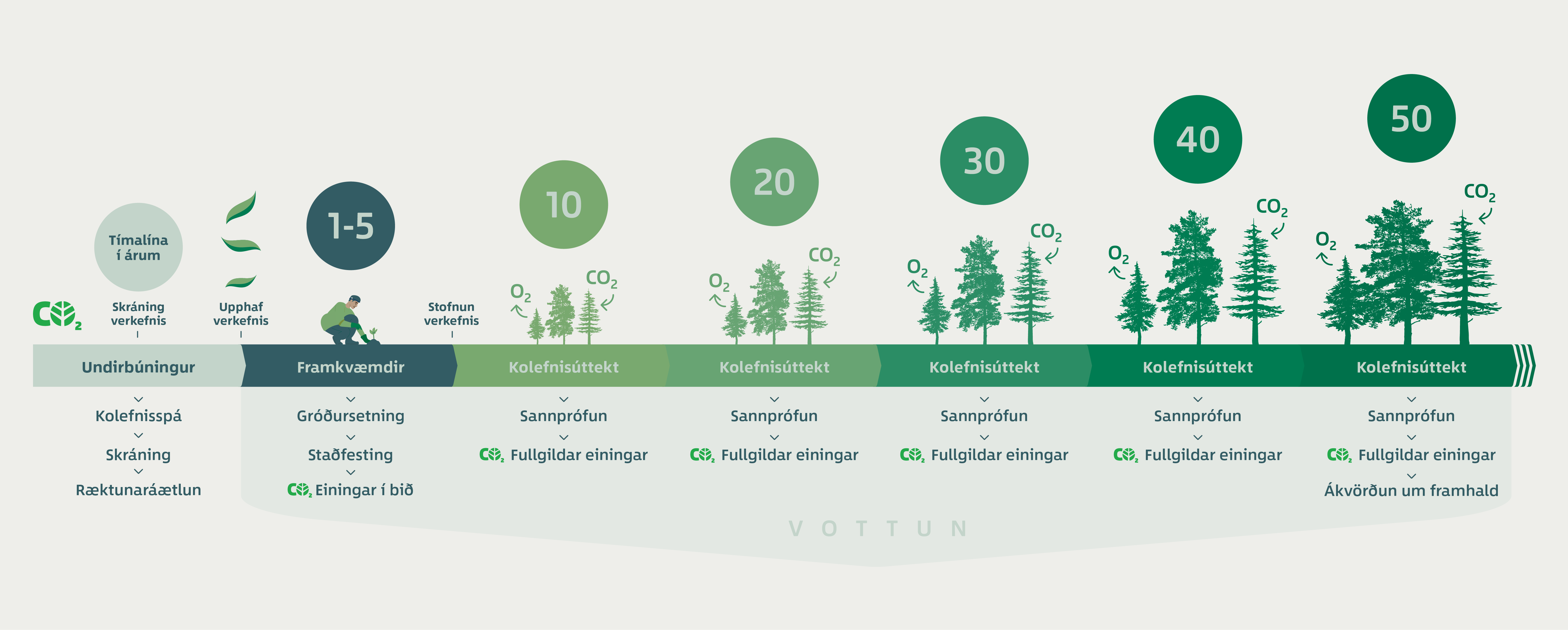The Basics

Skógarkolefni - Forest Carbon Code - The Basics
This voluntary carbon code encourages a consistent approach to afforestation carbon projects and offers clarity and transparency to customers. The current version of the set of rules is Skógarkolefni 2.0.
While society must make every effort to reduce its CO2 emissions, tree planting can also play a role by removing carbon dioxide from the atmosphere. The potential of forests to soak up CO2 from the atmosphere while providing a host of other benefits for society and biodiversity is increasingly recognized, and many individuals and businesses wish to contribute to tree planting to help society soak up the carbon it emits. But before investing in such projects people want to know that schemes will deliver the carbon savings that they claim.
Skógarkolefni - Forest Carbon Code provides reassurance about the carbon savings that customers' contributions may realistically achieve.
Validation / verification to the code means that woodland carbon projects:
- are responsibly and sustainably managed to national standards.
- can provide reliable estimates of the amount of carbon that will be sequestered or locked up because of the tree planting.
- must be publicly registered and independently verified.
- meet transparent criteria and standards to ensure that real carbon benefits are delivered.
To meet the requirements of the code, projects must:
- register their project, stating the exact location and long-term objectives of their project.
- meet national forestry standards to ensure they are sustainably and responsibly managed.
- have a long-term management plan.
- use standard methods for estimating the carbon that will be sequestered.
- demonstrate that the project delivers additional carbon benefits than would otherwise have been the case.
- maintain verification for the duration of the project.
Projects that meet all these requirements can carry Skógarkolefni – Forest Carbon Code label of approval.
The Code works for everyone involved:
- Carbon buyers have reassurance that they have invested in a responsible scheme and can see the benefits that will be provided.
- Projects have recognized procedures and standards to work to and can use their verified status as an attractive selling point for potential customers.
- Forest managers have clearly set out standards of forest management to follow.
Sell or use carbon units:
- Carbon units can only be used once - you can sell them to a third party to compensate for their emissions or you can use them yourself against your own emissions.
Voluntary carbon markets
Climate change is a crisis that affects every business, government and individuals. Therefore, everyone must participate in the transition towards a climate friendly economy. Governments participate on an international level, establishing their targets for reduction in emissions and removal of anthropogenic emissions from the atmosphere. Within their jurisdictions, they implement policies and regulations to facilitate the transition. This is done for example by introducing new taxes, lowering taxes or subsidies for climate friendly solutions. In some jurisdictions, carbon heavy solutions are still being subsidised and many economies are still developing. It is crucial to support such development with climate friendly solutions. They are often uninvestable or their attractiveness to investors is much lower than the alternative carbon heavy solution. This is where carbon markets are effective in supporting green solutions.